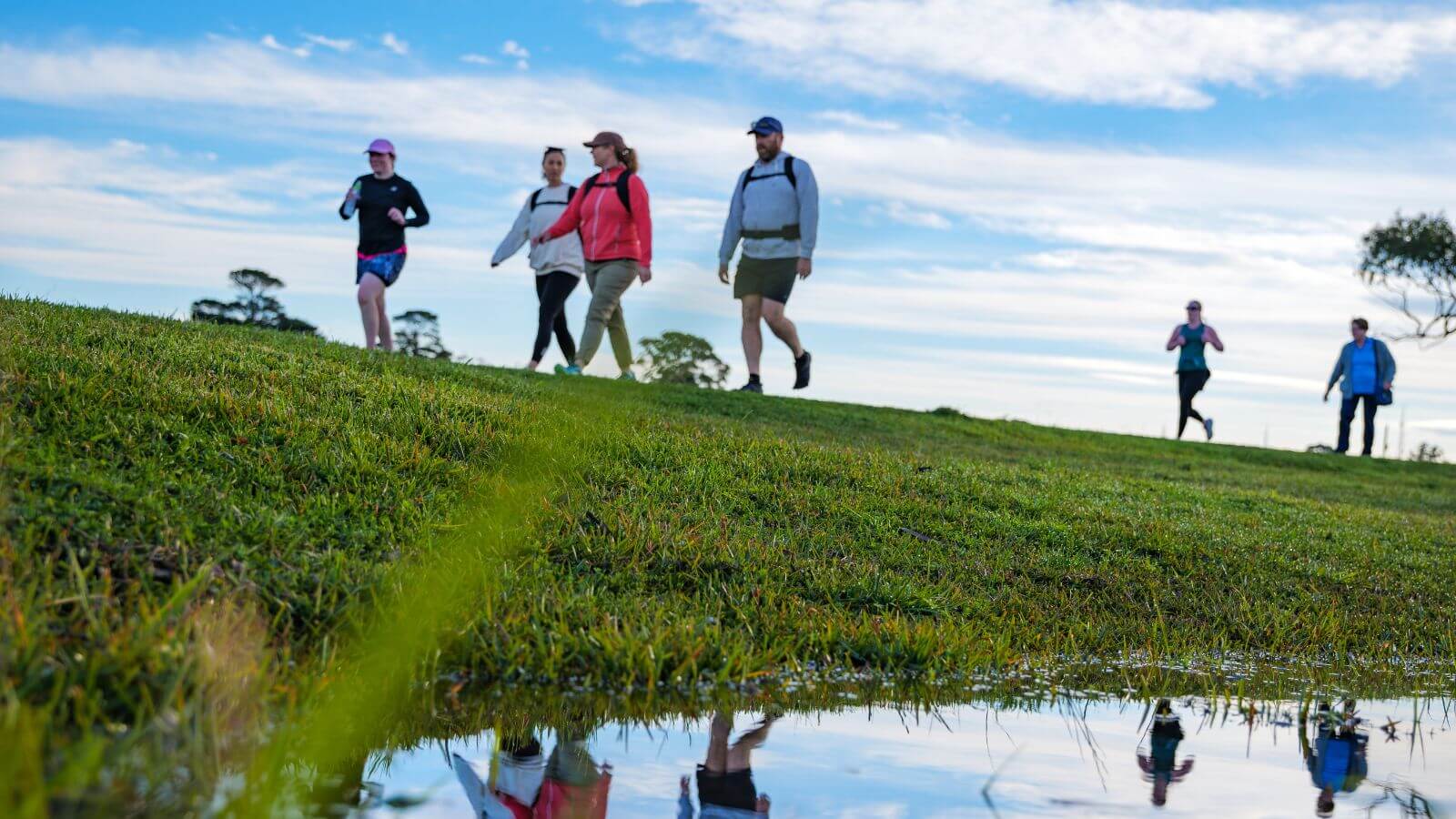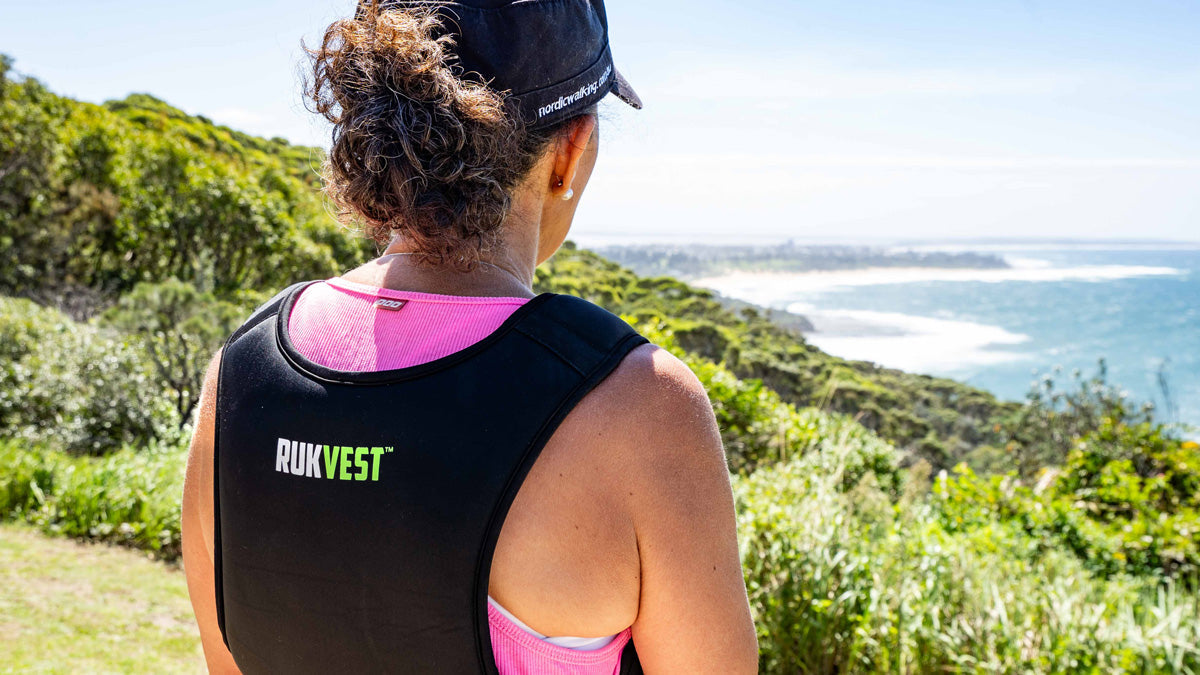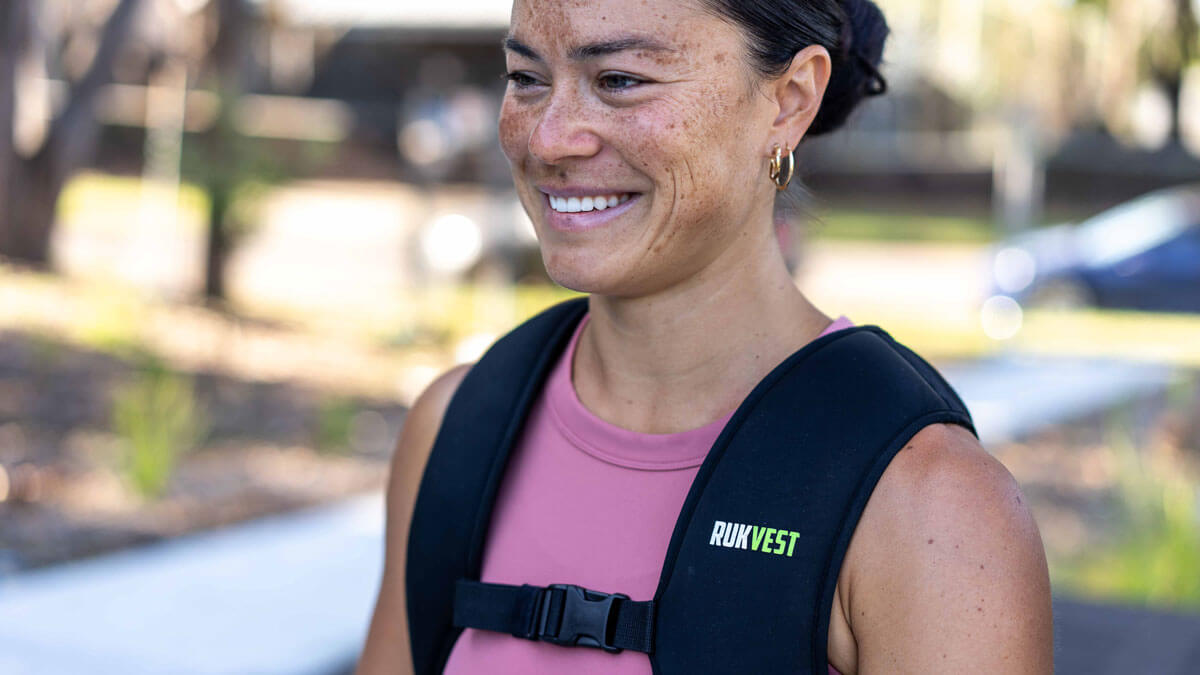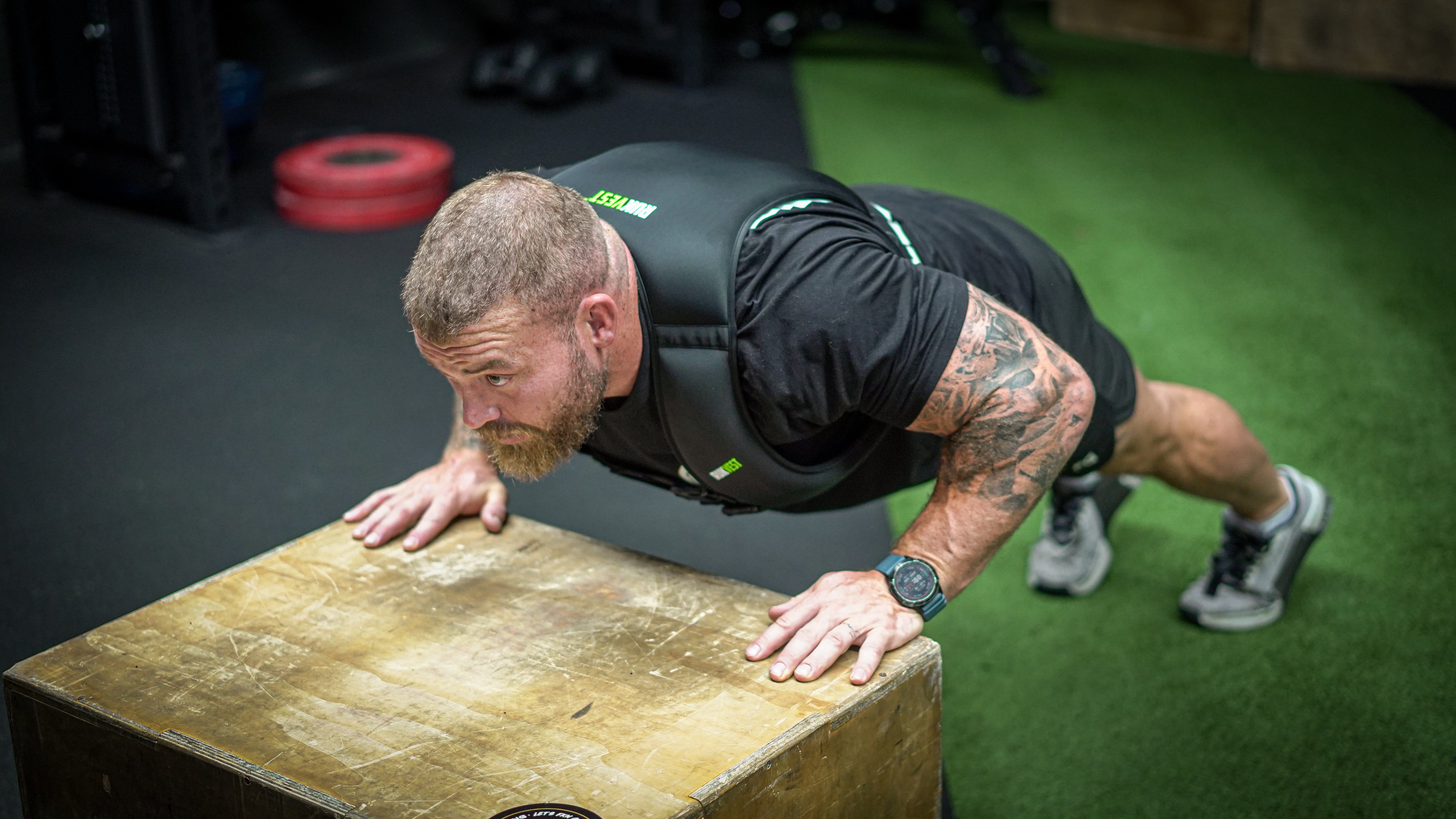Do you find it difficult to get in the daily 8-10,000 steps that all the health experts recommend we do?
If so, you are going to love what I am about to share with you.
Key Takeaways
- Three brisk 15–20 minute walks after meals can help you easily reach 8–10k daily steps.
- Post-meal walks reduce blood sugar spikes, improve energy, sleep, and hormone balance.
- Short, frequent walks burn more calories than one long session and are easier to fit into busy days.
- Add a weighted pack or vest (like a RUKSAK or RUKVEST) to boost calorie burn and build strength.
To start, you should know that even on the most sedentary of days you will still average 3000-4000 steps just moving from the couch to the pantry, desk to the loo … you know, doing us human things.
So the good news is that you are already halfway there, and what I will share with you will not only get you there, but get you there with maximum return from a minimal investment.
The plan … to go for a quick 15-20 min stroll 3 times a day … that's it.
And by doing smaller walks at the right time, you will easily hit the daily walking targets, but with increased calorie burn, reduced blood sugar spikes and more chance of it being a routine than trying to get in a solid one hour walk each day.

Let's start by talking about walking timings.
You want to do three small walks around 30 mins after each of your three main meals of the day.
Why?
Well it's been well documented (including on my CGM) that walking after eating helps minimise blood sugar spikes.
This is not only great news for us insulin resistant / type 2 diabetics out there, but for everyone else, reducing blood sugar spikes has so many health benefits it is ridiculous.
- Improved Energy Levels,
- Normalised Hormone Levels,
- Reduced Hunger and Cravings,
- Reduced Inflammation,
- Improved Skin Health,
- Improved Mental Clarity,
- Reduced Anxiety, Better Sleep Quality,
- Prevention of Chronic Disease
- and it even has anti ageing effects.
So surely by now you are sold on why you should walk after eating, now let me shed some light on why you are only walking 20 mins.
Firstly, more people will be able to find 20 mins after meals versus an hour a day to actually do this, and as we know, it's the doing that gets it done.
Secondly, more people are physically able to walk for just 20 mins versus an full hour, so it's a way more inclusive way for everyone to exercise, no excuses.
Thirdly, when you walk you want to be setting a brisk pace (100+ steps per minute is ideal), which is easier to do in shorter stints. Research published in the British Journal of Sports Medicine shows this pace unlocks more physical health benefits than just a stroll as it gets you to a moderate intensity level of exercise.
And lastly, researchers from the University of Milan have just discovered that you burn more calories by walking smaller distances more often than you do setting out for one long stroll.
They found that getting moving initially and then getting the body up to exercise temperature uses more energy than when you are underway and maintaining a constant walking cadence.
So if you struggle to make regular exercise a thing, try exercise snacking in the form of a few 20 min walks after eating. Not only will it make it easier to stick to a routine of exercise that fits into your busy schedule but it will deliver results over and above the traditional forms of exercise.
If you want to add even more value again, add some weight to your walk in the way of a RUKSAK or RUKVEST which will be sure to burn even more calories and add some strength based exercise to your cardio.








Share:
The Superiority of Outdoor Exercise: How Fresh Air and Natural Light Enhance Your Health
Rucking vs. Running: Which is Best for You?